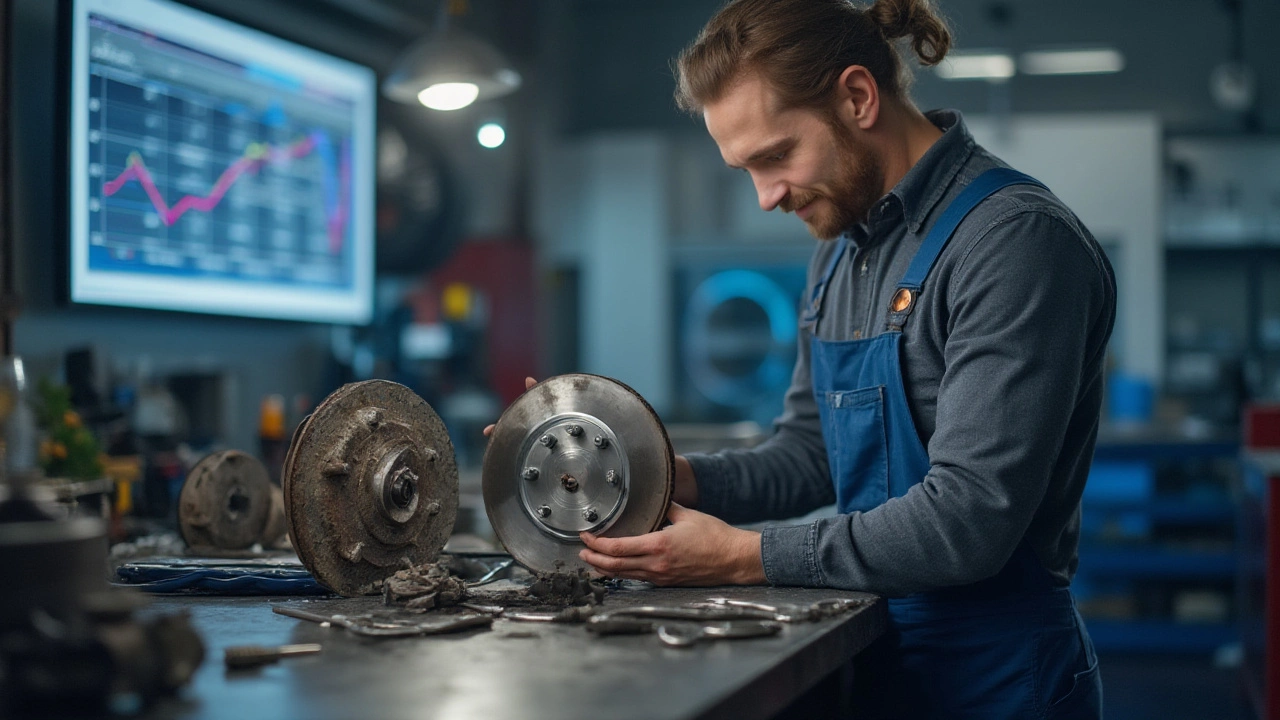Replace Rotors – Your Quick Guide to Healthy Braking
When working with Brake rotors, the steel discs that the brake pads squeeze to slow your car. Also known as rotors, they are a critical part of the brake system, the network of components that turns pedal pressure into stopping power and work hand‑in‑hand with brake pads, friction blocks that press against the rotor and brake calipers, the pistons that push the pads onto the rotor. If any of these pieces wear unevenly, the whole system suffers – that’s why knowing when to replace rotors matters.
Why Rotor Health Matters for the Whole Braking Chain
Rotors aren’t just a metal circle; they set the stage for how well your pads bite and how smoothly the calipers move. A warped rotor can cause the pads to chatter, which leads to uneven pad wear and puts extra stress on the caliper pistons. That extra stress often forces the driver to pump the brake pedal more, masking the problem until the brake fluid starts to overheat. In short, a single weak link can cascade into brake fade, longer stopping distances, and costly repairs.
Most UK drivers notice the first clues during routine drives: a high‑pitched squeal that doesn’t go away when you press harder, a pulsating brake pedal, or a visible groove running around the rotor surface. Those symptoms aren’t random; they’re the brake system telling you that the rotor’s thickness has dropped below safe limits or that heat‑related cracking has begun. Ignoring them means the brake fluid can boil, turning a hydraulic system into a mushy mess.
Another often‑overlooked factor is the interaction between rotor material and pad type. For example, ceramic pads are gentler on rotors but may not clean them as aggressively as semi‑metallic pads. If you swap pad materials without checking rotor condition, you might end up with glazing – a shiny, hard surface on the rotor that reduces friction dramatically. That’s why a good rotor inspection should include a visual check for discoloration, rust spots, and a simple thickness measurement with a micrometer.
What about the environment? Coastal areas with salty air accelerate corrosion, while aggressive mountain driving raises rotor temperatures. Both scenarios push rotors toward the end of their service life faster than the typical 30,000‑50,000 miles you see in generic guides. Keeping a record of mileage, driving conditions, and service dates helps you spot patterns early and plan a rotor swap before the brakes start screaming.
Now, let’s talk cost‑benefit. A new rotor set for a midsize car usually runs between £80 and £150, plus labour. Compare that with a blown brake caliper or a completely warped brake system, which can easily top £500. The math is simple: replace rotors on schedule, and you protect far more expensive components.
When you decide it’s time, the replacement process is pretty straightforward if you have the right tools: a jack, lug wrench, socket set, and a brake piston tool. Start by loosening the wheel nuts, jack the car, and remove the wheel. Then, unbolt the caliper (don’t let it dangle from the hose), slide the old rotor off the hub, clean the hub surface, and bolt on the new rotor. Re‑mount the caliper, torque the bolts to spec, and finish with a gentle brake pedal bleed to push any air out of the system.
After the job, you’ll notice smoother pedal feel, less noise, and more confidence when you hit the brakes hard. If you’re still hearing squeal, it might be the pads—you’ll need to inspect them too. Remember, rotor replacement is part of a bigger maintenance loop that includes pads, fluid, and calipers. Treat them as a team, not as isolated parts.
Below you’ll find a curated list of articles that dive deeper into each of these areas: how to spot rotor wear, the best pad‑to‑rotor pairings, caliper maintenance tips, and even fluid flushing guides. Use the collection to sharpen your knowledge before you roll up your sleeves.

Rotor Resurfacing vs Replacement: What Saves You More Money?
Jul 20 2025 / Car MaintenanceIs it actually cheaper to resurface or replace your brake rotors? Learn the real cost differences, what's best for safety, and tips to keep your brakes working longer.
VIEW MORE